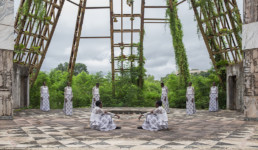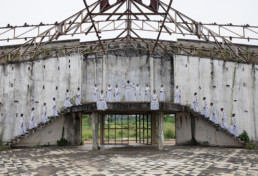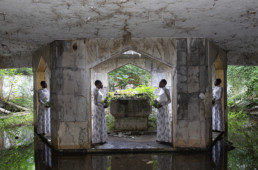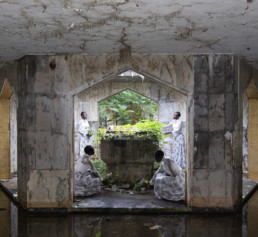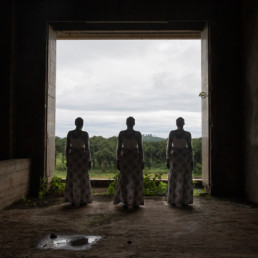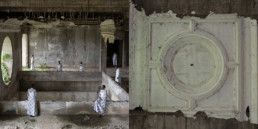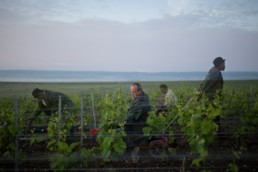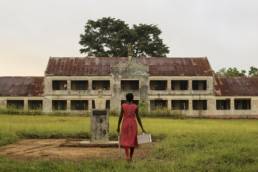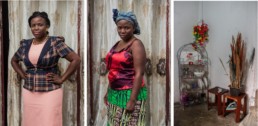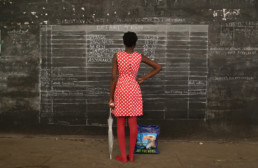Terre de lait, terre de miel series (2022)
Gosette Lubondo
Inkjet print on Hahnemühle Photo Rag 308 g paper.
Variable dimensions | Edition : 7 + 2 E.A.
___
Continuing with her memory-based work, Gosette Lubondo has turned her attention to the heritage of Gbadolite, located in northern DRC. In times past a town of lavish palaces branded the “jungle Versailles”, rising from the middle of the jungle through President Mobutu’s will alone, Gbadolite is now reduced to ruins.
"Terre de lait, terre de miel" (from Leviticus “I will give it to you to possess, a land flowing with milk and honey”) refers to the desire underpinning the creation of Gbadolite built on the site of Mobutu's native village – the promise of a place where nothing would be too luxurious or beautiful.
To usher us in, Gosette invites us to a ceremony inspired by political animation – dances and songs praising Mobutu. However, the dancers’ rhythmic dance routines and brightly coloured costumes have made way for contemplation and meditation. Gosette ascribes these feelings to the characters that she brings back to these abandoned places, which they knew at the height of their past glory, crystallised in the country’s collective memory.
VERSION MOBILE
Terre de lait, terre de miel series (2022)
Gosette Lubondo
Inkjet print on Hahnemühle Photo Rag 308 g paper.
Variable dimensions | Edition : 7 + 2 E.A.
___
Continuing with her memory-based work, Gosette Lubondo has turned her attention to the heritage of Gbadolite, located in northern DRC. In times past a town of lavish palaces branded the “jungle Versailles”, rising from the middle of the jungle through President Mobutu’s will alone, Gbadolite is now reduced to ruins.
"Terre de lait, terre de miel" (from Leviticus “I will give it to you to possess, a land flowing with milk and honey”) refers to the desire underpinning the creation of Gbadolite built on the site of Mobutu's native village – the promise of a place where nothing would be too luxurious or beautiful.
To usher us in, Gosette invites us to a ceremony inspired by political animation – dances and songs praising Mobutu. However, the dancers’ rhythmic dance routines and brightly coloured costumes have made way for contemplation and meditation. Gosette ascribes these feelings to the characters that she brings back to these abandoned places, which they knew at the height of their past glory, crystallised in the country’s collective memory.

